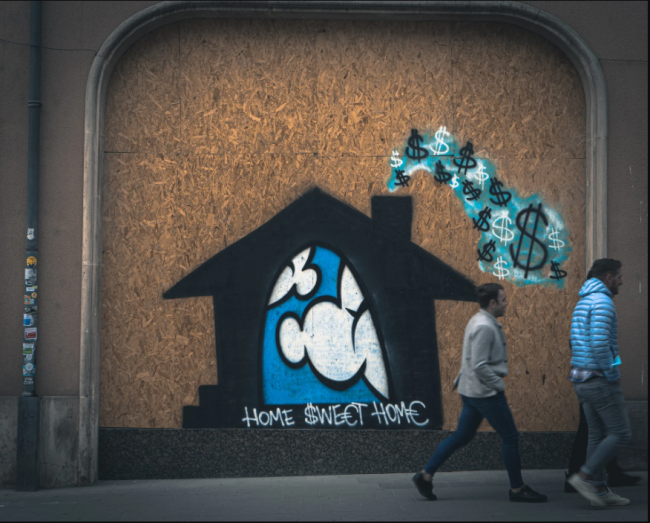Articles Menu

June 23rd 2023
In Canada, most federal energy-efficiency programs target homeowners: the Canadian Greener Homes grant, for example, offers $125 to $5,000 to install heat pumps, swap out insulation and more.
While these programs will make homes more efficient — which means using less energy and, therefore, producing fewer planet-warming greenhouse gas emissions — they leave behind a third of Canadians: renters.
On Friday, Efficiency Canada released a paper that digs into that inequity and makes policy suggestions on how Canada could lead the way by marrying rental protections with energy-efficiency programs.
As of now, renters are “consistently and systematically left out of government energy-efficiency initiatives,” said co-author Abhilash Kantamneni. At the same time, many renters experience energy poverty, meaning they spend a disproportionately high percentage of their income on home energy bills.
A November 2019 report from the Canadian Urban Sustainability Practitioners broke down numbers across the country and found Atlantic Canada had the highest rates of energy poverty, with 41 per cent of residents in Prince Edward Island dealing with high energy cost burdens. Ontario had the highest overall numbers at 1.1 million households.
Canada’s National Observer caught up with Kantamneni to learn more about the paper and why it's important to include tenants in energy-efficiency plans.
There are some retrofit programs that are free for renters, such as BC Hydro and FortisBC’s energy-saving kit, which includes LED bulbs and high-efficiency shower heads, but there seems to be a lack of deep retrofit programs that benefit renters. Have you seen programs that incentivize landlords to make these kinds of swaps?
There aren’t a lot of those kinds of programs, but there are some significant ones. For example, the City of Ottawa has launched an energy-efficiency financing program where you get a zero-interest loan for making energy upgrades on your home. And if you're a landlord, you qualify on your rental property but you agree to keep renting the housing at an affordable cost. If you don't, they immediately pull the loan back, so you have to pay the loan and the interest if you raise the rents beyond a certain amount of time.
In your report, you talk about how those types of efficiency measures will have benefits directly for renters, such as lower energy bills and a more comfortable home. We’re seeing climate change impact people’s health, from wildfire smoke to heat waves. How does that come into play?
This Q&A with Abhilash Kantamneni of @EfficiencyCAN breaks down a new paper that digs into the inequity of current energy-efficiency measures + makes suggestions on how Canada should combine rental protections with energy-efficiency programs. - Twitter
Landlords are expected to have a functioning toilet, are expected to have a shower, to have a window in every bedroom. These are expectations that are built into what qualifies as a rental property. So what we're saying is that energy-efficiency policies have to be aligned with what we are calling “a tenant bill of rights in a net-zero future.” Tenants should have the right to know how much their energy bills will be before they move in. Energy bills, after rent, are the single largest expense, and you have no control over it. So energy-efficiency policies have to uphold these rights. Health and well-being are built into those rights: having a house that acts as a refuge against the elements on the outside, be it wildfires, be it heat effects. I think if we recognize tenants have those rights, we can use energy efficiency as a tool to help uphold and deliver on those rights.

You suggest a policy mix to address the current inequity in access to efficiency measures. What does that look like?
You can take policies from the world of energy efficiency or building energy efficiency, and you can take policies from the world of tenant protections and tenant rights and combine them to create a mix of policies. So that way, we're not saying you have to implement one policy and the world will be a better place. You can kind of mix together a range of policies. You make energy efficiency accessible for all, including renters, and then in doing so, you combine that with rent protection or rent freeze for landlords to access that funding. There is a different mix of policies that can be put together, and then we can confront and reconcile the outcomes and the challenges of policies.
And what role do you suggest the federal government plays here?
The federal government has a natural incentive to take this issue seriously because renovations will be a big challenge if we are to meet our net-zero goals, and because renovating a house while tenants are already living in it is a huge challenge.
Without adequate protections, landlords will just take the money and the incentives and end up renovicting existing tenants and raising rents. The flip side is if they keep ignoring rental housing, we’ll end up in a situation where the path to net zero will only benefit people who own housing. And I don't think the federal government wants that because they have committed to leaving no one behind in a net-zero future.
Things the federal government can do, for example, is provide more funding to tenant rights organizations, legal aid clinics, advocacy centres, so that way, tenants are not left fending for their rights, but we have a positive system of providing tenants with that kind of support when they need it and insist that every federally funded energy-efficiency retrofit on rental housing must have a tenant liaison who can then work with the tenants to kind of bubble up their priorities on the project planning and so on. So there's very specific concrete actions that the federal government could be taking on this that I think would be a good start.
This conversation has been edited for length and clarity